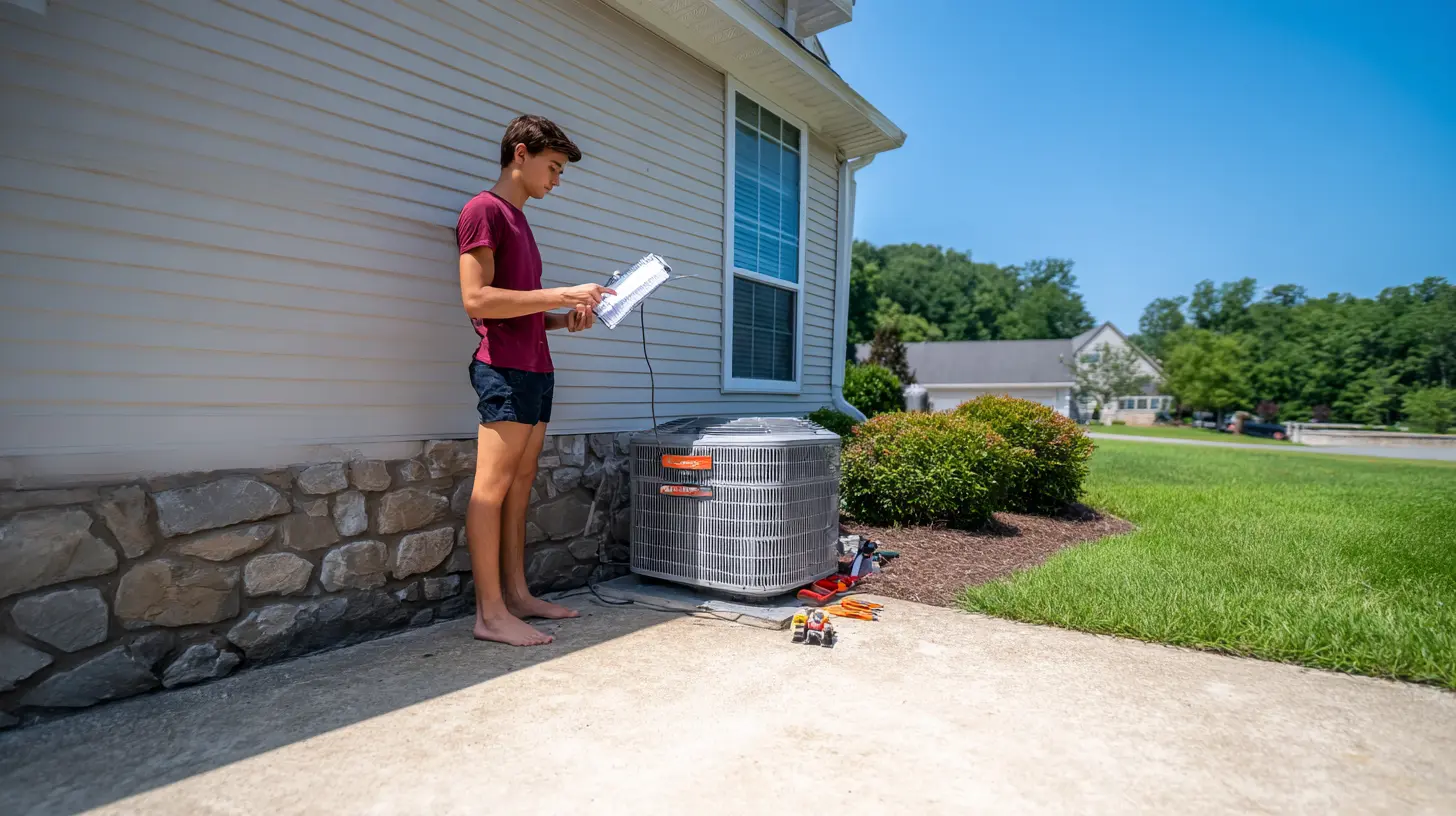
As temperatures rise, your HVAC system becomes essential for maintaining comfort and indoor air quality. Prepping your air conditioner for the summer months helps ensure it runs efficiently and prevents costly breakdowns. Here's your comprehensive HVAC maintenance checklist to keep things cool and energy-efficient all summer long. Whether you're a seasoned homeowner or new to maintaining HVAC systems, these tips will help you save money, extend the life of your equipment, and stay comfortable during the hottest days of the year.
Clogged filters reduce airflow, making your system work harder and increasing energy costs. Check your filters monthly and replace or clean them every 1–3 months, especially during peak usage. Dirty filters can also contribute to poor indoor air quality, triggering allergies and asthma symptoms. If you have pets or live in a high-pollen area, you may need to replace them more frequently.
Remove dust, pet hair, and debris from all supply and return vents. Ensure furniture or drapes aren't blocking airflow. Proper ventilation improves efficiency and comfort. Use a vacuum with a brush attachment or a damp cloth to clean the grilles. This is also a good time to check for signs of mold or moisture, which could indicate a hidden duct problem.
Leaves, grass clippings, and other debris can restrict airflow around your outdoor condenser unit. Keep at least 2 feet of clearance on all sides and gently hose off the unit to remove dirt buildup. Inspect the fins for damage or bending, and use a fin comb if necessary to straighten them. This step helps improve cooling efficiency and prolongs the unit's life.
Switch your thermostat to cooling mode and set it to a comfortable temperature. Consider upgrading to a programmable or smart thermostat for better energy management and savings. These devices allow you to set schedules, monitor energy use, and control your system remotely—features that can lead to noticeable cost savings over the summer months.
Look for signs of wear, damage, or leaks in refrigerant lines and insulation. If lines appear worn or you notice cooling issues, contact an HVAC technician for inspection and repair. Leaking refrigerant not only reduces your system’s efficiency but also poses environmental hazards. A professional can recharge the refrigerant and replace damaged insulation.
Routine maintenance by a certified technician ensures your system operates efficiently and safely. A tune-up typically includes checking refrigerant levels, tightening electrical connections, lubricating parts, and inspecting system components. Technicians may also clean the evaporator and condenser coils, test system controls, and ensure safe startup and shutdown sequences.
Explore our HVAC maintenance services to keep your system in top shape year-round.
A clogged condensate drain can lead to water damage and increased humidity. Make sure the drain is clear and water flows freely. If unsure, have your HVAC tech handle this during your tune-up. Standing water or mold near the drain line could also be a sign of a blockage or improper drainage slope.
Run your AC for a full cycle before the summer heat peaks. Listen for unusual noises, monitor how long it takes to cool your home, and check that rooms are cooling evenly. Uneven cooling may signal duct problems, refrigerant issues, or poor system design. Address these problems early to avoid emergency repairs.
Leaky ducts can cause energy loss and uneven cooling. Seal visible gaps with duct mastic or foil tape, and insulate ducts in unconditioned spaces to prevent heat gain. Professional duct sealing may also improve system performance by up to 20%, making this an investment worth considering for older systems.
If your AC unit is over 10–15 years old or requires frequent repairs, it may be time to consider an upgrade. Newer models are more energy-efficient and may qualify for rebates. Look for ENERGY STAR certified units, which use 8–15% less energy than standard models. Also, explore options like ductless mini-splits for zoned comfort and increased efficiency.
Read our blog on Signs You Need a New AC Unit to learn more about when to replace your system.
Many thermostats allow you to set the fan to "auto" or "on." In summer, setting the fan to "auto" is usually best, as it only runs when the AC is cooling. This saves energy and reduces humidity. If you prefer constant air circulation, the "on" setting can help, but expect slightly higher energy bills.
Proper insulation keeps cool air inside and hot air out. Inspect attic and wall insulation for coverage and quality. Upgrading insulation can lead to significant cooling cost reductions and increase overall home comfort during the hottest months.
At least once a year, ideally before the summer season begins, to ensure peak performance.
Basic tasks like changing filters and cleaning vents are DIY-friendly, but professional inspections are crucial for safety and efficiency.
Possible causes include dirty filters, low refrigerant, duct leaks, or thermostat issues. A professional tune-up can identify and resolve the problem.
Most systems last 12–15 years with proper maintenance. Older units may be less efficient and more prone to breakdowns.
Yes, smart thermostats offer better control, energy savings, and remote access—especially beneficial during summer heat waves.
Need help preparing your HVAC system for summer? Contact Yukos Mechanical, your trusted HVAC provider serving Rockland County and the New York tri-state area.
Our clients trust us for fast, reliable HVAC solutions—see their stories below!
Whether you’re planning a new system or just need service advice, our team is here to help—no pressure, no obligations.